by Julia Flamingo
“En El Principio Era El Delirio” is the name given by the artist Fátima Moreno to her site-specific project which will be on view until November 15, 2020 at the Art Curator Grid office, in Lisbon. She was invited by Italian curator Antonia Gaeta to bring forward the second edition of the Lab Box project space, a 1,20m x 1,20m x 2,35m white cube which is recurrently occupied by young artists in order to promote stand-alone, immersive exhibitions. Read below for the interviews we carried out with both curator and artist on their works and creation processes:
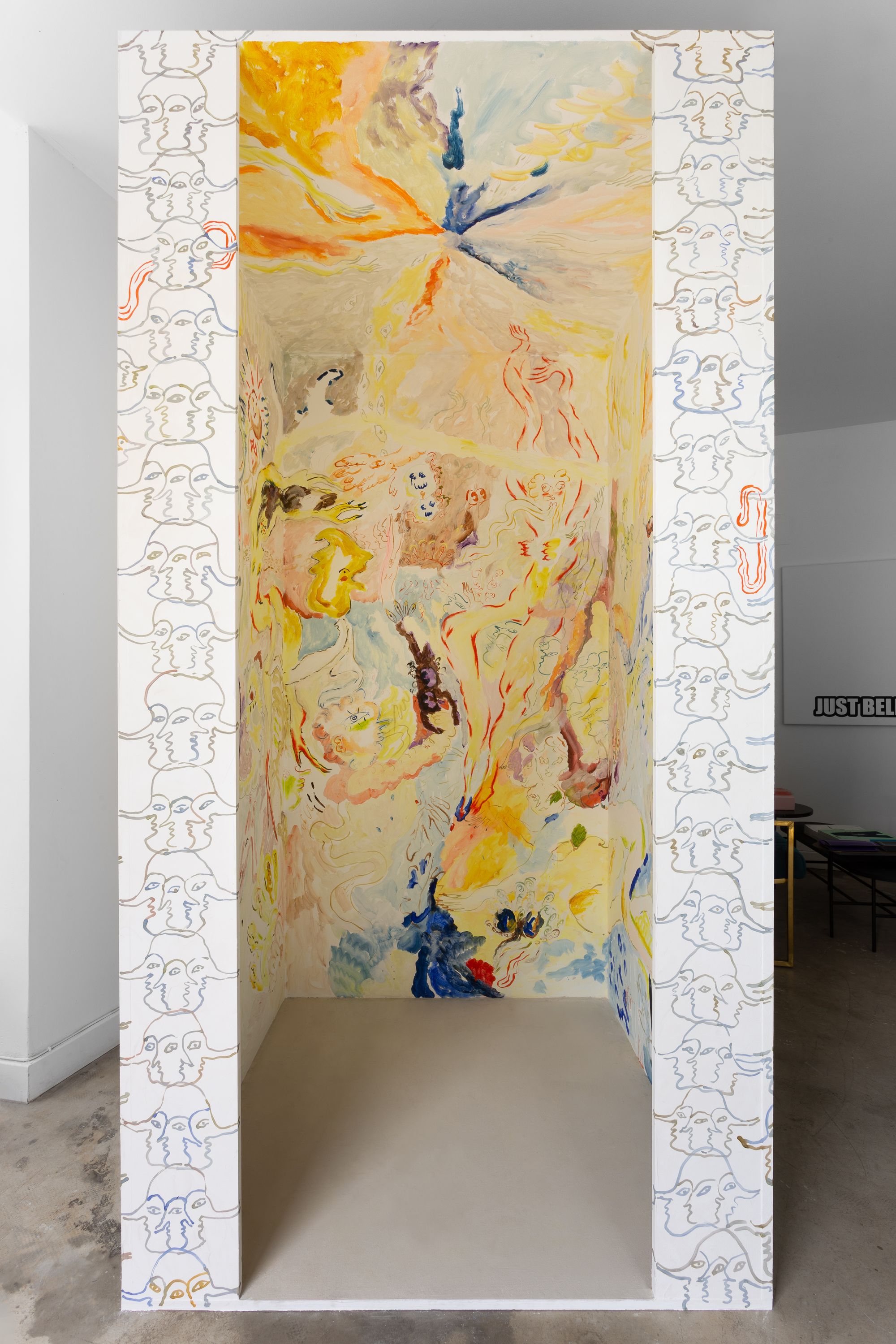
Interview with Antonia Gaeta
Julia Flamingo - When you received the invitation by Art Curator Grid to submit to an artist the proposal of creating an exhibition meant for a box a little larger than the size of one body, what was your choice path up until reaching Fátima Moreno?
Antonia Gaeta - After Pauline Foessel’s invitation and after coming to know the physical features of the space it was immediately clear to me that the invitation should be directed at an artist who would be able to work the space as a medium for the piece. The choice was near-instantaneous. I followed Fátima’s work and I wanted to work with her but at the same time I wanted to go beyond that which is the usual medium of her pieces. The invitation and the proposal of a mural came about on our first meeting.
JF - Lab Box was created before the pandemic, but the experience of an exhibition meant for a single person is very much a reflection of our post-quarantine times. Do you believe that your role and your responsibility as a curator have changed during that period?
AG - There are, in fact, contingencies and limitations which were brought about by the pandemic that should be taken into consideration. And to think of crowded exhibitions where everyone huddles up in front of an artwork is something that, right now, terrifies us. However, I think it necessary not to lose the habit of being close, of meeting up and talking face-to-face, with a mask on but present in the same space. The truth is that both curatorship and an exhibition without physical fruition are incipient things. It is necessary for there to be a place for the corporeal and aesthetic experience.

JF - You are also responsible for one of the most important collections of art brut, Treger Saint Silvestre, at the Centro de Arte Oliva, further to the north of Portugal. Alongside this, you are the founder of Verão, in Lisbon, which seems to me a space more open to experimentation. Can you tell us a bit more about your experience as a curator in each of these so seemingly different projects?
AG - Well, to be precise, I am not responsible for the Treger Saint Silvestre collection, which is stored at Centro de Arte Oliva. I have, rather, collaborated continuously with the collection and with collectors Richard Treger and António Saint Silvestre since 2015 in the curatorship of exhibitions both at Centro de Arte Oliva and in other museums and exhibition centers. Working with this collection is extraordinary for the richness and quality of the artists and the artworks. The collectors are genuinely passionate about the art and buy regularly to complement nuclei of the collection. To me, it is a never-ending learning process, but what’s most important is that I enjoy absolute freedom to experiment and work as I see fit. And that, aside from being a gift, is crucial. Verão came about at a turning point in my personal life, more than my professional life, and it is a nonprofit independent space. What I show in my space are artists whose work I have wanted to see more often in exhibitions, in the museums and galleries of the city. At Verão my work as a curator is narrowed down to the invitation, the artists conceive the exhibition freely. I merely make it possible for there to be a materialization and an execution of the artworks and, of course, I’m available to discuss ideas. Aside from that, the bulk of my work consists of preparing and fitting the space: I cover holes, smoothen the putty, paint the walls, I help with the assembly, I sweep the floor, I open the door, and I explain the piece. And that gives me immense pleasure! The work of curatorship, no matter where, or in what form, or what the conditions are, always gets my equal dedication and care.
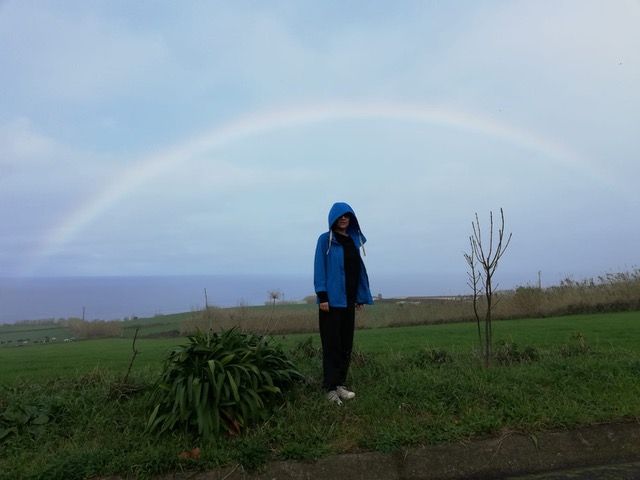
JF - Art Curator Grid’s proposal is that Lab Box be produced through a dialogue between the curator and the artist, and you have always been very present throughout the entire production process of the artwork. How was your work process with the artist?
AG - Rare are the cases in which I don’t follow the work of an artist alongside them. In this specific case, with Fátima, it was all very fluid. It was incredibly pleasurable watching her work, sliding the brush against the wall, working with the sponge, mixing the pigments. And though we talked about blotches and shapes while Fátima worked on her mural, she had a rather clear and defined picture of what she wanted to do.
JF - I’m curious: why do you call yourself a neologist?
AG - As a child that was my favorite game. Having learned to read and write, I began to make up words which were concepts, situations, images, or the visualization of all that, and I would write stories, all of them for my grandfather, the only one to encourage this disruptive use of the Italian language. My elementary school teacher found this freedom detestable. But I felt the need to express new things and since I did not know the right words I created them. As the years went by and as I learned to express myself in other languages, new words came about as a result of a process of composition and adaptation from other languages.
Read Antonia Gaeta's full curatorial text here

Interview with Fátima Moreno
Julia Flamingo - To what extent do the challenges put forward by curators and by the exhibition spaces, such as our Lab Box, interfere with and stimulate your creativity and your artistic practice?
Fátima Moreno - Every time a challenge is put forward, proposing to make you step out of your usual formats or thought patterns, that is in itself greatly stimulating. It always makes you create something new, at least in my case it does, and aside from the novelty of format or space it also makes me change my way of thinking and addressing painting or drawing.
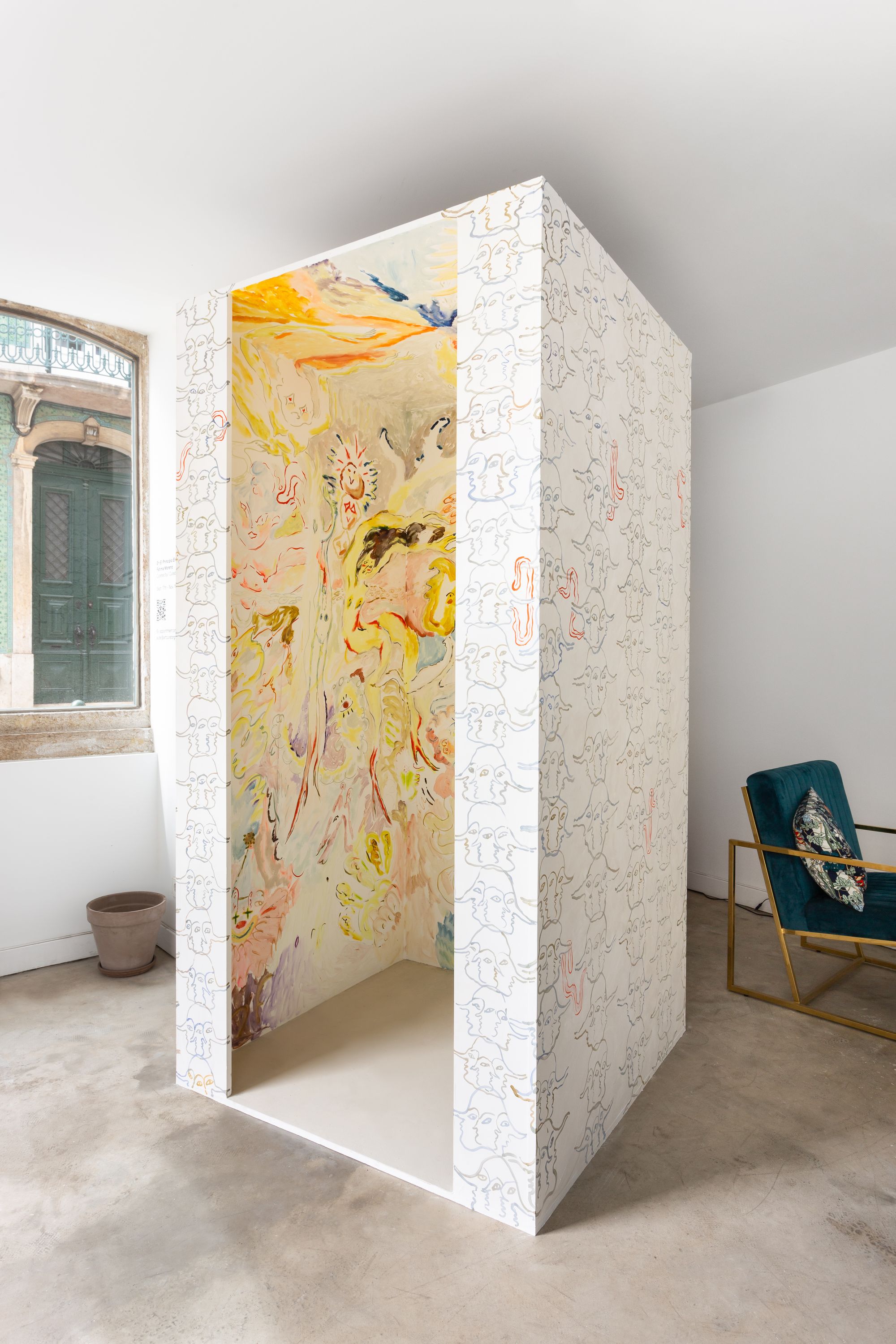
JF - Much like everything in our world, this exhibition was suspended during quarantine. Now that it has fortunately been resumed, can you tell us what changed in that process of what you had planned to produce for LAB BOX and what you ended up producing?
FM - I don’t think anything changed in the process, it just became longer and for now it has inevitably caused it to end up being a different experience than that which might have happened if it had been inaugurated on its original date, but the idea remained the same.
JF - You bring many references of your childhood in Granada into your work, of Spanish culture and literature – during the production stage of your exhibition you listened to plenty of flamenco! Can you tell us how your moving from Spain to Portugal in 2015 affected your work as an artist and your profession as an illustrator?
FM - I have always thought that my work has a markedly Spanish character, perhaps in its straight narrative aspect, in being overt, the spontaneity, and one of the things where I feel the difference between Spanish and Portuguese culture is this, not fearing ridicule, to bring frailty to light and make a mockery of it. I have also thought about the relation between the language you speak and the artistic language itself, but those are just vague musings. I should say, however, that moving to Lisbon has given me the personal freedom and space for me to define my identity within the scope of artistic and illustration work, something which is relatively recent. Living here has been very inspiring and fruitful.
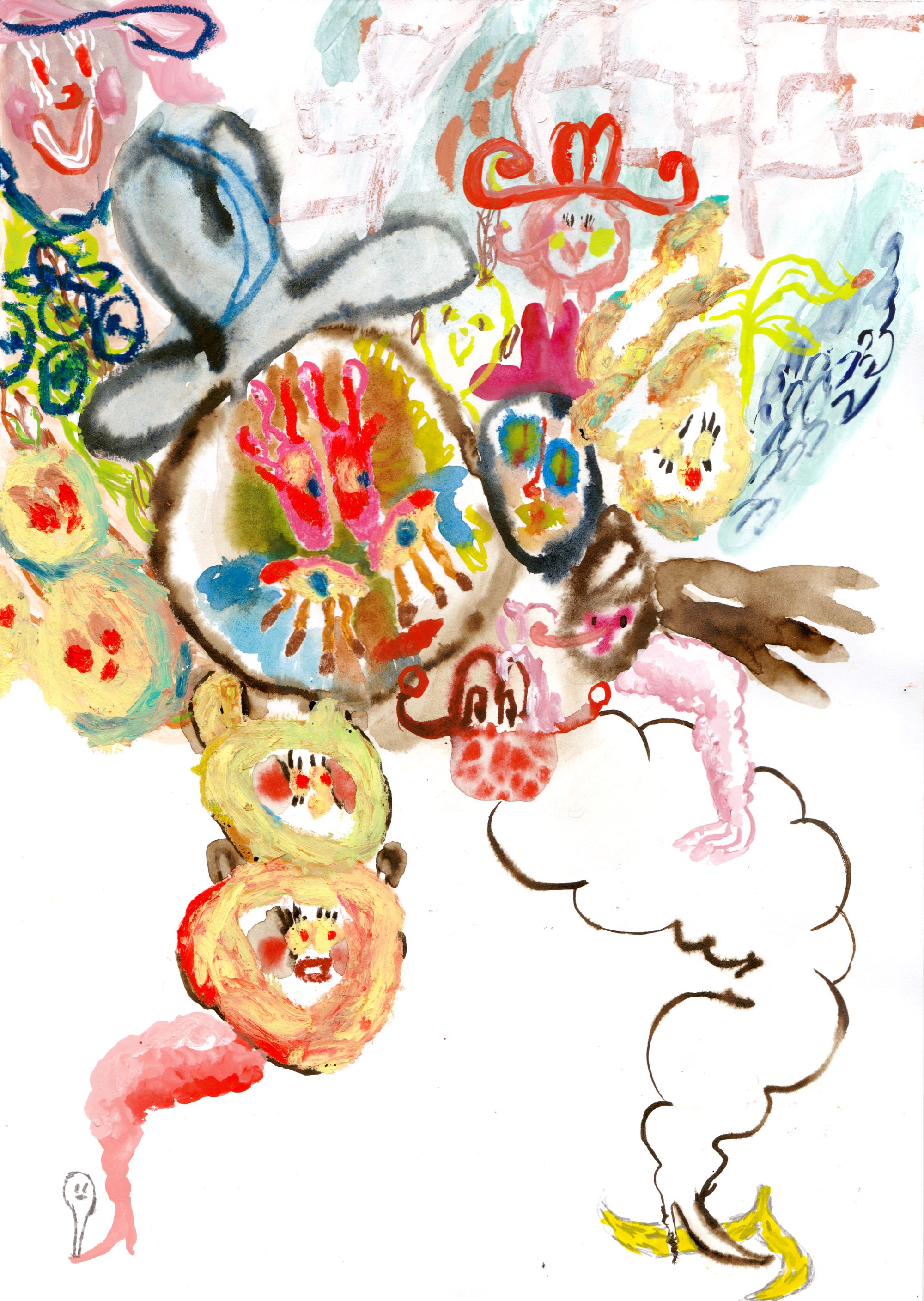
JF - Lastly, I’ll ask you the same question I asked Antonia: Art Curator Grid’s proposal is that Lab Box be produced through a dialogue between the curator and the artist. Can you tell me how your work process with the curator has been?
FM - Antonia invited me to intervene in this space with the idea of making a mural already in mind, an idea I instantly loved. Work has been a pleasure, fluid, and very thoughtful on Antonia’s part, she supports you constantly, in such a way that you feel she has you covered without ever feeling any sort of an intrusion. I felt great confidence, and that is the best you can ask for in the type of process where it could play out in an entirely different fashion. I am very pleased with the experience.
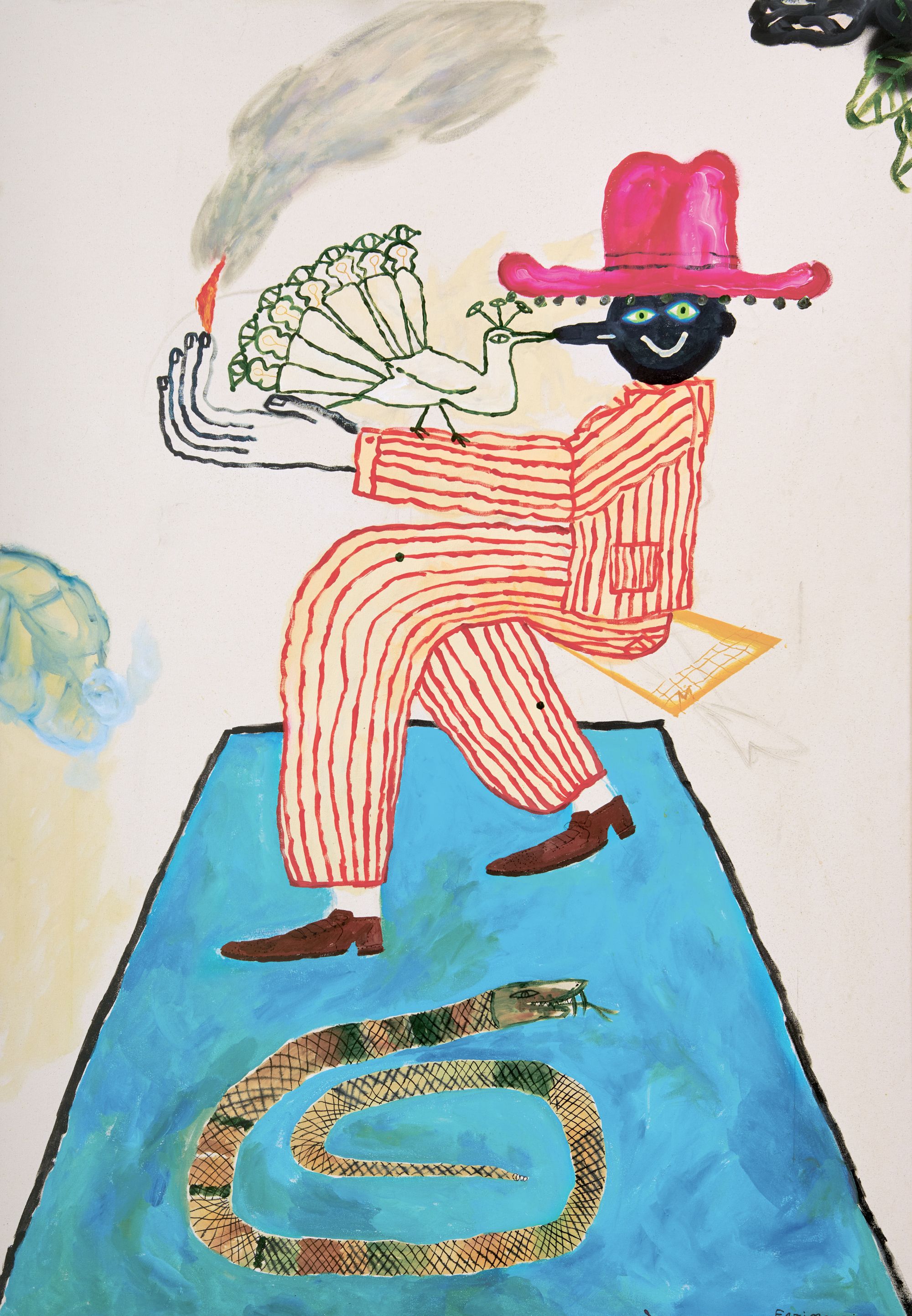
En El Principio Era El Delirio
On view From September 17 to November 15, 2020 – By appointment only Reservations: hello@artcuratorgrid.com
Art Curator Grid Office
Rua da Lapa, 126, Lisbon, Portugal